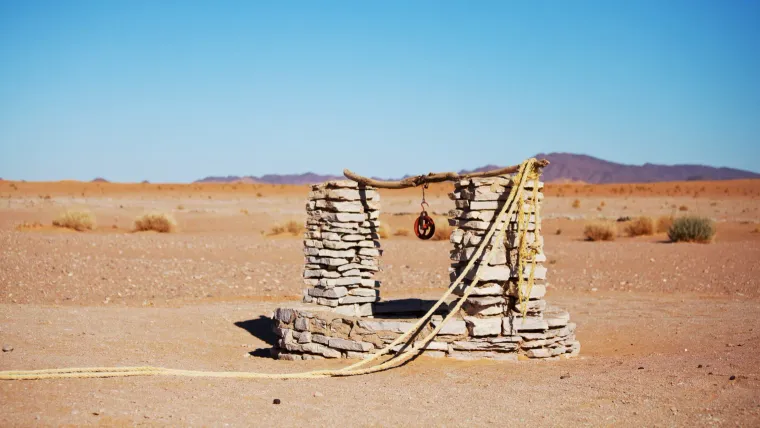When was the last time you went to a well to get water?
What about one of your family members?
In the West, we’re far removed from the world of the Samaritan woman we meet in John 4. We don’t need to visit a well to meet our basic need of clean water. We simply go to our kitchen or bathroom, turn on a tap, and water instantly flows out—as much or as little as we desire, hot or cold or somewhere in between.
I mention the obvious simply because we miss important elements of the story if we don’t look to contextualise wells for our modern Western culture as we read.
What are our metaphorical wells?
Answering this is the aim of this first of two articles about the Samaritan woman Jesus encounters at a well in John 4.
Wells in the ancient world
Wells in the ancient world were places women visited daily to satisfy their family’s need for clean water, especially in the absence of a nearby river. Women would use water drawn from a well for drinking, cooking, and washing.
These are all good things to do with water, but water is heavy to carry, and the well may be a distance away. One litre of water weighs one kilogram. Add to that the weight of the container you’re carrying the water in, and things can get heavy quickly. Especially over longer distances.
A trip to a well was therefore hard work.
Not only was there the physical exertion of drawing the water up from deep in the ground and then carrying all that weight home, there’s also the heat to contend with. The people of Israel and Samaria lived in a hot, arid climate. You did not want to be exerting yourself during the hottest part of the day. That would simply increase your need for water!
I also imagine water could be quite stressful. If you didn’t draw enough water for the day or spilt some on the way home, you would either have to go without or have to make the trip all over again.
Samaria
[Jesus] had to travel through Samaria; so he came to a town of Samaria called Sychar near the property that Jacob had given his son Joseph. Jacob's well was there, and Jesus, worn out from his journey, sat down at the well. It was about noon.
— John 4:4-6 CSB (emphasis mine)
In Jesus' day, the land of Israel was loosely divided into three distinct areas: Galilee to the north, Samaria in the centre, and Judea (where Jerusalem was situated) in the south. The Mediterranean Sea formed the western border; while the Sea of Galilee, the River Jordan, and the Dead Sea formed its eastern border.
You couldn't walk from Judea in the south to Galilee in the north, or vice versa, without travelling through Samaria. However, you may have heard it taught that ancient Jews refused to travel through Samaria, and used to cross the River Jordan twice in order to avoid doing so.
This is not true.
First, the New Testament doesn't support this theory. Jesus travels through Samaria in John 4 because he physically "had to" (v.4), and he and his disciples also do so in Luke 9:52-56 and 17:11-19. So do Philip (Acts 8:5, 26), Peter and John (Acts 8:14-15, 25), and Paul and Barnabas (Acts 15:3).
Second, the first-century Jewish historian Josephus writes:
For rapid travel, it was essential to take that route by which Jerusalem may be reached in three days from Galilee.
— Josephus
Life of Josephus, 269
It didn't make sense to avoid Samaria just because of tribal tensions.
Jesus
Jesus would have frequently travelled through Samaria throughout his life. This trip was therefore nothing unusual. The unusual thing in this story is that he rests at the well outside of Sychar rather than heading into the town itself.
Men didn't visit wells.
From a cultural perspective, he's in the wrong place.
But then so is the woman he meets there.


